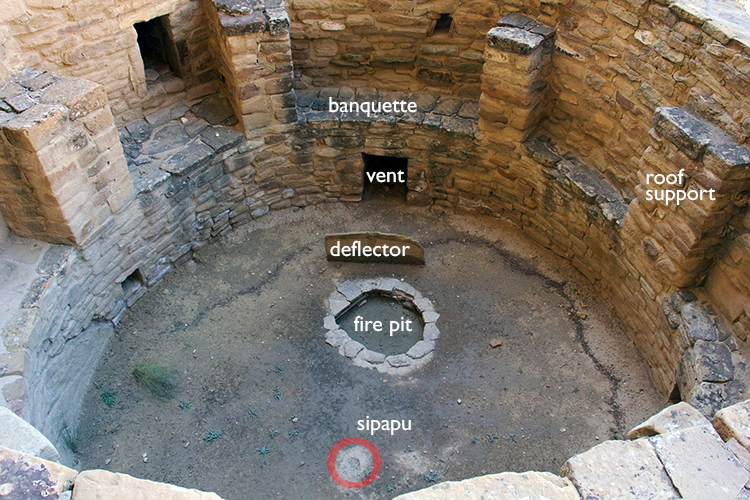Mesa Verde cliff dwelling
Montezuma County, Colorado Ancestral Puebloan (Anasazi) 450-1300 C.E. Sandstone
The cliff dwellings remain, though, as compelling examples of how the Ancestral Puebloans literally carved their existence into the rocky landscape of today's southwestern United States.
Fully Identify
Mesa Verde Cliff Dwellings
450-1300 C.E.
Sandstone
Ancestral Puebloan (Anasazi)
Montezuma County, Colorado
Form
Built directly into the cave
Dwellings built both on top and in/along the mesas
Over 600 structures
Made of stone, mortar and plaster
Stone and mud mortar, supported by wooden beams adapted to the natural clefts in the cliff face
Shaped the sandstone using harder stones
Used chinking pieces to fill gaps in the mortar
New building technique from other dwellings that were built using adobe
Adobe - type of brick made from clay, sand, straw and/or sticks
Composed of architectural units and kivas (see context)
The paintings and murals were pigmented with clay, minerals and other organic materials.
Function
Continued use for ceremonies, though not specifically the Mesa Verde structures
Originally both residential and ceremonial
Originally covered but now they do not have roofs
The space around the buildings was used as a small plaza
Circular and rectangular/square rooms for living
One room in the architectural unit that was facing the plaza usually used for family gatherings
Smaller rooms off the hearth were used as storage rooms
Cliff Palace has some unusual structures including a circular tower, which the use for is still unknown
Content
Kivas- underground circular rooms used for ritual purposes
Had a wooden roof held up by sandstone columns (sat on the the top of the columns like a shelf
Had a firepit in the center with a vent and a deflector
Also had a small hole in the ground called a sipapu for ceremonial purposes
Spaces in between Kivas and housing spaces
Small rooms off the hearth (storage rooms) had holes large enough to squeeze an arm through to grab anything on may need
Plastered and painted murals, many that remain are fragmentary
Murals and other paintings decorated the walls
Geometric designs, plants, and animals
The geometric designs were used to depict the geography of the land
Context
Mesa Verde means “green table” table refers to the mountains
Ancestral Puebloans lived in the Mesa Verde for about 850 years (450-1300 C.E)
Not all the people lived in the Mesa Verde, but the structures are the best preserved
500-1300 CE, Ancestral Puebloans were mainly sedentary farmers
Originally farmers lived closer to their crops but later they began to lie near sources of water and would walk farther to reach their crops
Exact reasoning for the cliff dwellings is unknown, possibly provided protection from invaders, snow, and provided shade. There could also have been a ceremonial or spiritual reasoning
Abandoned around 1300 CE probably due to drought, lack of resources, or violence
Themes
Sacred spaces
Man vs nature



